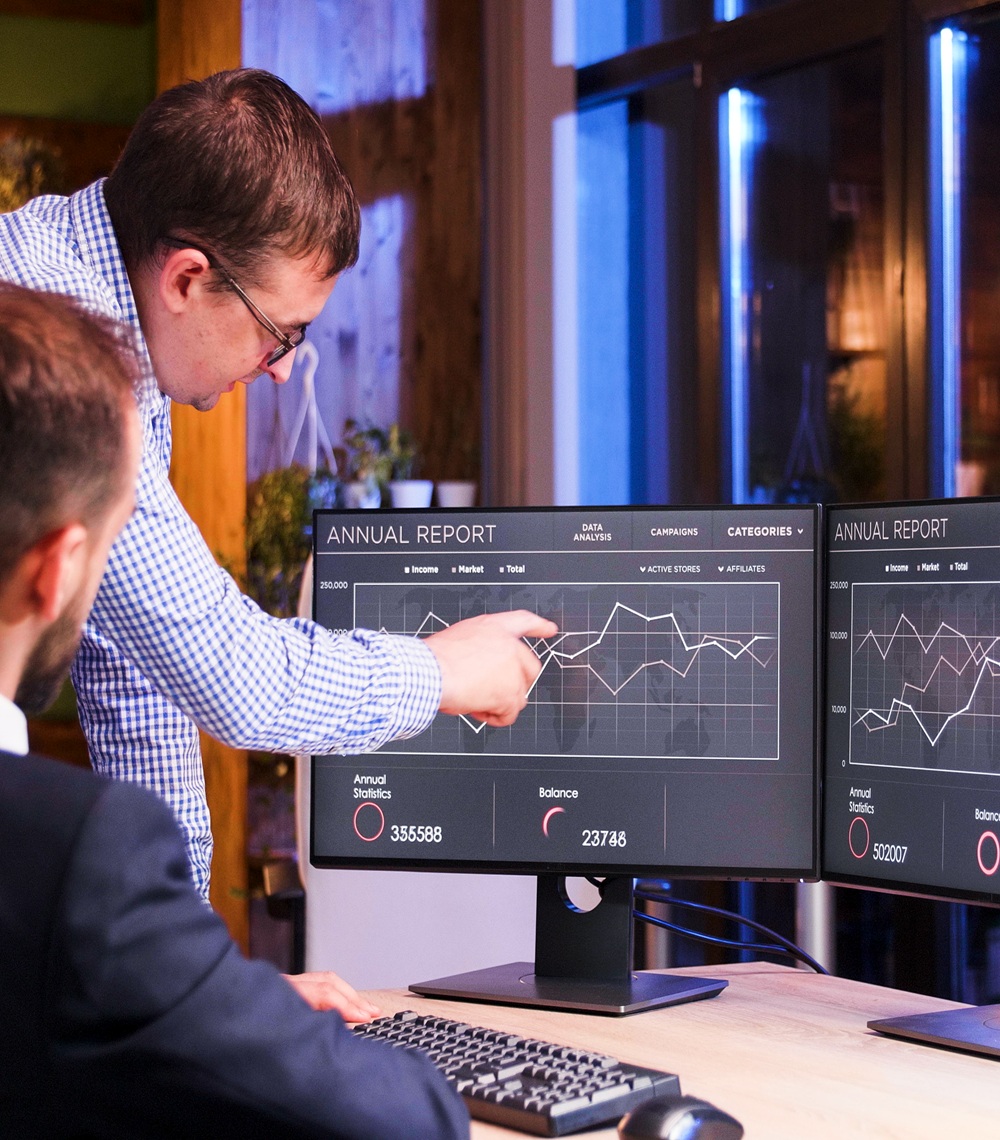
With numerous data products relying on hundreds and thousands of external and internal data sources, modern organizations now have a more significant number of data use cases. To meet their growing data needs, they have adopted advanced technologies and big data infrastructures.
The increasing complexity of the data stack, the sheer volume, variety, speed, and quantity of data generated and collected, opens the door to more complex issues like schema changes, random drifts or poor data quality, downtimes, duplicate data, and other complex issues. The complexity of data management is also exacerbated by the many data storage options, data pipelines and an array of enterprise applications.
Data engineers and business executives responsible for maintaining and building data infrastructures and systems are often overwhelmed. They do their best to keep data systems functional and operational as much as possible. There are no perfect systems, and data volumes can be unpredictable. No matter how much money data teams have invested in the cloud, how sophisticated an analytics dashboard is or how well-designed it is, everything fails--if unreliable data is ingested, transformed, and pushed downstream.
Modern data pipelines are interconnected and not intuitive. Because of this, data from both internal and external sources can become inconsistent, inaccurate, missing, or change suddenly, which could eventually impact the correctness and accuracy of dependent data assets. Data and analytics teams must be able to dig deep to find the root cause of any data issues and then resolve them.
It isn't easy to achieve this without a comprehensive and complete view of the entire data stack and its lifecycle. Data observability is valuable for data teams and organizations to ensure data quality and a reliable data flow throughout their day-to-day business operations.
Data observability is essential, organizations and teams should pay attention to it in order to achieve their data-driven visions.
What is Data Observability?
While observability is most commonly used in engineering and software systems, it is also essential in the data niche. Software engineers can monitor the health and performance of their applications using tools like DataDog, AppDynamics and NewRelic -- data teams must also do the same.
Data observability is the ability of an organization to keep a constant pulse on their data systems through tracking, monitoring and troubleshooting issues to reduce downtime, improve data quality, and eventually prevent issues from happening.
It is also a collection of technologies and activities that allow data and analytics teams to track data-related failures and walk upstream to determine what is wrong at each level (quality, infrastructure, and computation). This helps data teams to measure the operative and effective use of data and understand what’s happening across every stage of the enterprise data life-cycle.
Similar to the three pillars of observability, data observability has 5 pillars. Each pillar answers a series of questions that allow data teams to get a holistic view of data health and pipelines when they are combined and continuously monitored. Let’s have a look at these questions:
- Freshness: Was all data received and is it current? What upstream data was omitted/included? When was the last time data was extracted/generated? Was the data received on time?
- Volume: Has all the data been received? Are all the data tables complete?
- Distribution: To whom was the data sent? How useful and complete is the data? Is the data reliable? What was the process of transforming the data? Are the data values within an acceptable range of value?
- Lineage: Who are the downstream ingesters of a data asset? Who generates the data? Who will use the data to make business decisions? What are the stages at which downstream ingesters will use the data?
- Schema: Does the data format conform to the schema? What has changed in the data schema? Who made the changes?
What Is the Importance of Data Observability?
Data observability goes beyond monitoring and alerting. It allows organizations to understand their data systems fully and allows them to fix or even prevent data problems in increasingly complex data situations.
1) Data observability increases trust in data so that businesses can make data-driven business decisions confidently.
While data insights and machine-learning algorithms can be invaluable, inaccurate or mismanaged data can have devastating consequences.
Public Health England (PHE), which tracks daily Covid-19 infection rates, found an error in their data collection. This error caused 15,841 cases between September 25 and October 2 to be overlooked. According to the PHE, the Excel spreadsheet used to collect data exceeded its data limit. The result was that the daily number of new cases was much higher than initially reported. Tens of thousands of people who had tested positive for Covid-19 did not receive contact from the government's "test & trace" program. Data observability allows organizations to track and monitor situations efficiently and quickly. This allows them to make more informed decisions.
2) Data observability allows for the timely delivery of high-quality data to support business workloads.
Every organization must ensure that data is easily accessible and in the correct format. Almost every department in an organization relies on high-quality data for business operations. Data scientists, data engineers, and data analysts depend on the data to provide insights and analytics. A lack of quality data can lead to costly business process breakdowns.
For example, your company has an ecommerce site with multiple data sources (stock quantities, sales transactions, user analytics), which consolidate into a data warehouse. To generate annual reports, the sales department requires sales transaction data, the marketing department relies on user analytics data to run effective marketing campaigns and data scientists rely on data to build and deploy machine learning models that will help them recommend products. It could cause harm to the various aspects of the business if one of the data sources is incorrect or out of sync.
Data observability is a way to ensure the quality, reliability, and consistency of data within the data pipeline. It gives organizations a 360-degree overview of their data ecosystem. This allows them to drill down and fix any issues that could disrupt their data pipeline.
3) Data observability allows you to identify and fix data issues before they affect your business.
Pure monitoring systems have a significant flaw that they can only detect unusual conditions or situations you know about or anticipate. But what about those cases that you can't see coming?
A mistake caused by Amsterdam's City Council in 2014 led to the loss of EUR188 million. Inadvertently, the error occurred because the software used by the council to distribute housing benefits to low-income families was programmed in cents rather than euros. Families received significantly more than they anticipated due to the software error. People who were expected to receive EUR155 received EUR15,500. Even more alarming is that administrators were not notified of this error by the software.
Data observability can detect situations you don't know about or wouldn't consider looking for. It can also prevent problems from becoming severe business issues. Data observability allows you to track the relationships between specific issues and provides context and pertinent information for root cause analysis.
Top Data Observability Platforms for Monitoring Data Quality at Scale
We understand how difficult it can be to find the right observability tool for your company. Here is a list of the top platforms for data observability in 2022.
1) Monte Carlo
Monte Carlo's observability service offers a complete solution to prevent a damaged data pipeline. This tool is an excellent choice for data engineers as it allows them to check dependability and avoid expensive data downtime. Monte Carlo has unique features, including data catalogs, alerts, and out-of-the-box observability on multiple criteria.
2) Databand
Databand's goal is to make data engineering more efficient in a complex infrastructure. Databand's AI-powered platform provides data engineers with tools to optimize their operations and get a single view of all their data flows. Its goal is to identify the core elements of data pipelines and where they have failed before insufficient data can get through. The contemporary data stack also includes cloud-native technologies like Apache Airflow or Snowflake.
3) Honeycomb
Honeycomb provides developers with the visibility needed to identify and fix problems in distributed systems. The firm claims that Honeycomb helps developers understand and fix complex interactions in dispersed services. Its full-stack cloud observability technology provides logs, traces, events and automated instrumented codes using Honeycomb beelines as its agent. Honeycomb supports OpenTelemetry for the generation of instrumentation information.
4) Acceldata
Acceldata is a data observability platform that provides data monitoring, data dependability, and data observability solutions. These tools were created to assist data engineers in gaining cross-sectional and extensive views of complex data pipelines. Acceldata's products combine signals from many layers and workloads into one pane of glass, allowing multiple teams to collaborate on data problems.
Acceldata Pulse also provides performance monitoring and observability, which helps to ensure data reliability at scale. This tool is designed for the financial and payment industries.
5) Datafold
Datafold is a data observability tool that helps data teams assess data quality and implement anomaly detection and profiling. Datafold's capabilities allow teams to perform data quality assurance using data profiling. Users can also compare tables within a database or multiple databases and generate smart warnings with just one click. Data teams can also track ETL code changes during data transfers and connect them to their CI/CD to quickly examine the code.
6) SigNoz
SigNoz, an open-source full-stack APM/observability system that tracks metrics and traces, is available as an open-source project. Open-source means that users can host the program on their infrastructure without sharing their data with third parties. Full-stack technologies include telemetry, backend storage, and a visualization layer that allows consumption and actions. SigNoz uses OpenTelemetry(a vendor-agnostic instrumentation library) to create telemetry data.
7) DataDog
DataDog's observability software includes infrastructure, log management, and application performance monitoring. DataDog gives you a complete view of distributed applications by tracing requests from end-to-end distributed systems. It also displays latency percentiles and open-source instrument libraries. This is the "necessary monitoring and security platform for cloud applications," according to its creators.
8) Dynatrace
Dynatrace is a SaaS application for enterprises that targets large companies and addresses many monitoring needs. Their AI engine, Davis, can automate root cause investigation and anomaly detection. The company's technology may also be a unique solution to infrastructure monitoring, application security, and cloud automation.
9) Grafana Laboratories
Grafana's open-source analytics and interactive visualization web layers are well-known for accommodating multiple storage backends for time-series data. Grafana supports connections to Graphite, ElasticSearch, InfluxDB and Prometheus. It also supports traces from Jaeger, X-Ray, Tempo, and Zipkin. It also offers plugins, dashboards, alarms, and other user-level access for governance. Grafana Cloud offers solutions like Grafana Cloud Logs, Grafana Cloud Traces and Grafana Cloud Metrics.
10) Soda
Soda's AI-powered platform for data observability is an environment that allows data owners, engineers, and data analysts to work together to solve problems. Soda.ai describes the technology as "a platform that enables teams to define what good data looks like and handle errors quickly before they have a downstream impact." This tool allow users to examine their data and create rules to validate it quickly.
Implementation of a Data Observability Framework
Data observability is an "outcome" of the DataOps movement. Even though you can have the most advanced automation and algorithms to monitor your metadata, it will only benefit with organizational adoption. However, anyone can adopt DataOps as an organization, but it will be a well-documented philosophy that doesn't impact output without the technology to support it.
So, how do you implement a data observability framework that improves your data quality at all levels? What metrics should be tracked at each stage of the data observability framework?
These are the key ingredients for a highly-functional data observability framework:
i) DataOps Culture
ii) Standardized Data platform
iii) Unified Data Observability Platform
Before you can even consider producing high-value data products, you must have widespread adoption of the DataOps Culture. This requires everyone to be involved, especially leadership. They will be the ones who create the systems and processes that support development, maintenance, feedback, and other activities. A bottom-up movement is powerful, but you still need budget approvals to make the necessary technological changes to support DataOps.
Leadership can help the organization move towards a standardized data platform if everyone buys into the idea. What does this mean? To ensure that all teams have end-to-end accountability and ownership, infrastructure must be in place to allow them to communicate openly and speak the same language. Standard libraries are needed for API and data management (i.e., querying the data warehouse, reading/writing to the data lake, pulling information from APIs, etc.) A standardized library is also required to ensure data quality along with source code tracking, data versioning, and CI/CD processes. With all this in place, your infrastructure is ready for success.
You now need an open, unified platform for monitoring your system's health that allows your entire organization to access it. The observability platform will act as a central metadata repository. It would include all of the features mentioned earlier (like monitoring and alerting, tracking, comparison and analysis), so data teams could view how other platform sections affect them.
To effectively monitor the functioning of the Data Observability Framework, you should monitor the following metrics:
1) Operational Health:
- Execution Metadata
- Pipeline State
- Delays
2) Dataset Monitoring:
- Availability
- Freshness
- Volume
- Schema Change
3) Column-level Profiling:
- Summary statistics
- Anomaly detection
4) Row-level Validation:
- Business rule enforcement
- Stop "bad data"
To ensure operational health, it's best to collect execution metadata. This metadata includes information about pipeline states, length, delays, retries, and the times between runs. You should monitor the completeness and availability of your data along with the volume and changes to the schema. You should collect summary statistics for columns and use anomaly detection to alert you of any changes. The column trends would include the Mean, Max, and Min. Row-level validation would require you to ensure that previous checks were valid and adhered to your business rules. This is very contextual, so you will need to exercise your discretion.
Conclusion
Data observability is essential for any data team to be agile and iterate quickly on their products. Without data observability it's difficult for teams to rely on their infrastructure or tools because errors can't be tracked quickly. This results in less flexibility in developing new features or improvements for customers. You're effectively wasting money if you are not investing in this critical piece of the DataOps framework in 2022.
































